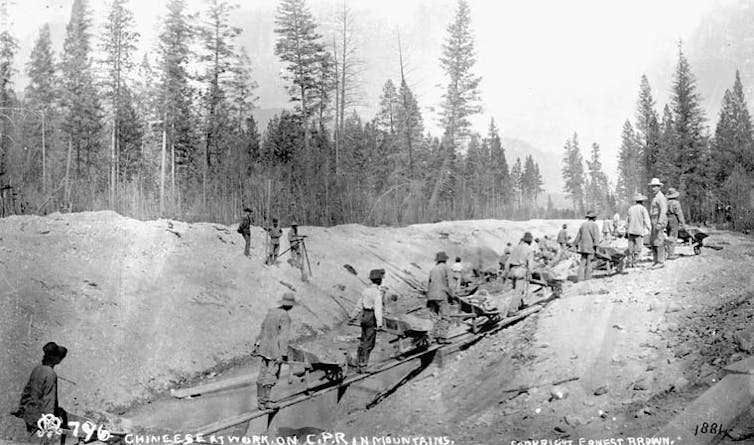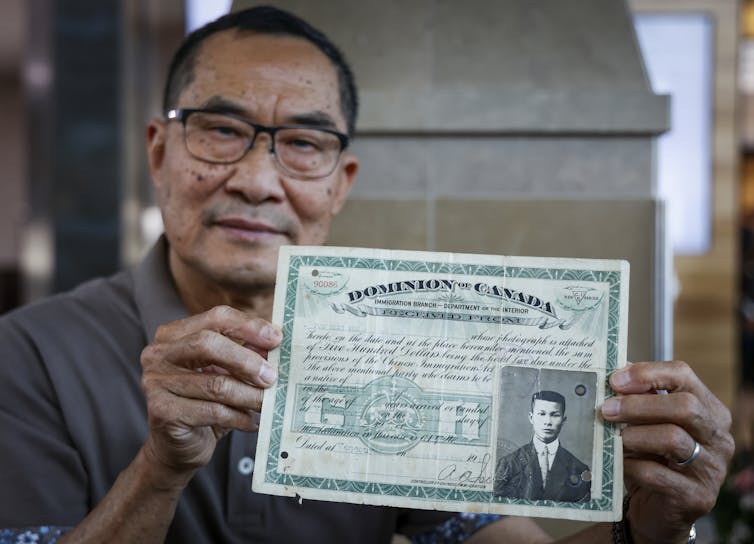
This July marks a century since the Chinese Exclusion Act was introduced in Canada. On June 23, a plaque was unveiled in the Senate in Ottawa to mark the centenary.
While the act was in force, Chinese immigrants to Canada faced strict restrictions that made it near impossible for many to enter the country. During the 24 years the act was in place, Canada admitted fewer than 50 Chinese people in total.
Canada’s Chinese community has come far since the days of exclusion. People of Chinese origin make-up just under five per cent of the population. Toronto recently elected a Chinese-Canadian woman from Hong Kong, Olivia Chow, as mayor. And last year, Ken Sim was elected as Vancouver’s first Chinese-Canadian mayor.
However, this does not mean that Chinese people, and Chinese women in particular, no longer experience racism, sexism and class discrimination in Canada.
The Chinese Exclusion Act and other discriminatory measures had profound and lasting impacts on Chinese women and family formation in Canada. Contemporary issues like accreditation systems, the preference for Canadian experience and education and a lack of affordable child care affect Chinese immigrant women and their families today.
Nation-building and Chinese labour
Canadian nation-building was a project built on excluding those who were deemed undesirable. That often meant imposing laws and restrictions that discriminated against Indigenous Peoples and other racialized communities.
However, Canada’s nation-building also required a great deal of cheap labour. From 1880 to 1885, 17,000 Chinese labourers worked under contract to build the Canadian Pacific Railway in British Columbia. Due to the treacherous working conditions, several hundred Chinese labourers died building the railway.
When the Canadian Pacific Railway was completed in 1885 and cheap Chinese labour was no longer needed, a head tax of $50 was levied by the state to deter poor labourers from entering Canada. It was later increased to $500 in 1903.
The few who managed to enter laboured as indentured workers under contract in order to repay their head tax and travel expenses. The exorbitant tax meant many poor Chinese labourers could not afford to bring their wives and children to Canada.

The head tax was not uniformly imposed on all Chinese immigrants. Preferential treatment was given to certain classes, such as merchants, diplomats and university students, who were allowed to enter Canada with their wives and children exempt of the tax. However, the number of people who were exempted from the tax was minuscule. With few Chinese women around, families could not be formed or settled permanently in Canada, and the Chinese population was effectively kept low.
The exclusion act
The racist exclusion of Chinese immigrants culminated in July 1, 1923 with the passing of the Chinese Exclusion Act, which excluded Chinese from entering Canada. The act required all Chinese people to carry identification or risk being fined or even deported.
Read more: A white riot in Vancouver: Tracing the steps of the 1907 anti-Asian mob

The act effectively stopped Chinese people, particularly Chinese women, from coming into Canada. Thus, the ratio of Chinese women to Chinese men in Canada remained disproportionate. This has had a tremendous effect on Chinese family formation and community development.
By 1941, there were 20,141 separated families in the Chinese community in which the husbands resided in Canada while the wives remained in the home country. In the same year, there were only 1,177 intact Chinese families in Canada where both the husbands and wives resided here.
Family separations continue
Recent Chinese immigrants to Canada are often highly educated and skilled. However, these immigrants often struggle to enter the Canadian labour market due to the devaluation of international credentials and experience.
Skilled immigrant women, in particular, often have to take on part-time, precarious work with low pay and no job securities for which they are overqualified. Despite the high level of education and prior experience many immigrants bring, they are still treated as a source of cheap labour.
The channelling of immigrants into precarious employment with low pay has a tremendous impact on their familial relationships and household arrangements. Some families may try to make ends meet by resorting to having one spouse, typically the husband, return to the home country to work, leaving the wife and children in Canada.

In addition, current Canadian immigration policy discriminates against older adults, and many elderly parents are unable to immigrate to Canada with their adult children. As a result, many immigrants lack the support that comes with having parents and other family members close by.
Immigrant women seeking to raise a family in Canada must reckon with a dire shortage of regulated affordable child care facilities, and a lack of subsidized child-care spaces for working mothers in Canada.
Like other women, Chinese immigrant women are responsible for bearing the bulk of the day-to-day housework and caring responsibilities. As a result, they are constantly juggling the contradictory demands of paid work, housework, and child care, preventing them from obtaining full-time work.
Some women resolve to send their children back to the home country to be taken care of by grandparents or other family members. That means children can often be separated from their parents for years.
A century ago, Chinese families were separated due to outright racist policies and practices in Canada. Today, Canada’s immigration policies and employment preferences are still excluding immigrants and separating families.
Without an integrative anti-racist, anti-sexist approach and structural changes, many Chinese families in Canada will continue to suffer simply for wanting to call Canada home.
Guida Man receives funding from SSHRC.
Keefer Wong does not work for, consult, own shares in or receive funding from any company or organization that would benefit from this article, and has disclosed no relevant affiliations beyond their academic appointment.
This article was originally published on The Conversation. Read the original article.







